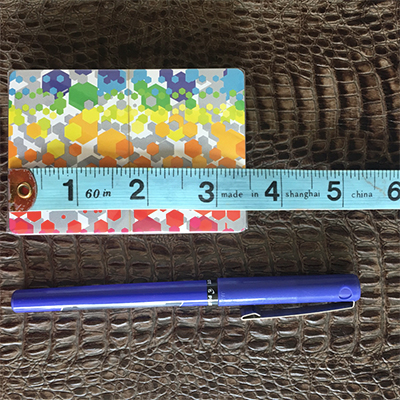I’ve written a lot about women’s bodies and sensuality over the years, so I think it’s only fair to focus on the men’s sexual health and pleasure for a change. After all, if you’re sleeping with a guy, you should understand how his body works, right? And the penis is quite a remarkable organ. With the help of noted urologist and men’s sexual health expert Dr. Laurence Levine and “sexual happiness coach” Cheryl Sloane, here are seven things every woman who sleeps with a man should know about his guy parts. Consider this your penis primer.
Matters of Size
Do men worry about the size of their penis? According to Dr. Levine, a professor of urology at Rush University Medical Center in Chicago, they sure do. “It’s remarkable how concerned men are about their length. It’s because they believe that women care about it.” Levine sees many men who come to him about penile enhancement and enlargement even though, “I would say 99.44 percent of them have a perfectly normal penis.”
In the United States, the average penis is 3.5 inches long when flaccid and 5 inches long when erect — about the length of a deck of cards and a ball point pen, respectively. Interestingly, the size of a man’s penis when soft doesn’t necessarily indicate the size of his erection — thus the expression “shower versus grower.”
If your guy is feeling insecure, remind him that size is just one part of the mix, and anyway, the main female pleasure center, the clitoris, is external. As a recent CNN article describes, the benefits of “outercourse” are often more fulfilling for women than intercourse. A man has a lot more to offer his partner than a big member. “It’s not the size of the ship; it’s the motion of the ocean,” Dr. Levine tells his patients. “In general, women are more interested in the lovemaking process than they are in penetration alone.”
Hard Nights
You’re probably already aware that men get erections when sleeping, but you may not know what a good thing that is. Healthy men can expect “anywhere from three to seven erections every night that you’re sleeping from the time you’re in your mother’s womb until the day you die,” says Dr. Levine. They occur when a man is in the REM/dream state of sleep, but these reflex erections are a result of being deeply relaxed and a release of testosterone, not a response to sexual dreams.
Nighttime hard-ons (technically, nocturnal penile tumescence) are the body’s natural way of keeping the penis in good shape; they’re like little workouts. An inactive penis can atrophy over time — it really is use it or lose it. But regular nocturnal erections send oxygen-rich blood flowing through the organ, keeping the tissue nourished and healthy, even if a man isn’t having sex.
“This is a very important organ for a man and for the species,” says Dr. Levine. “You want to protect it so even if you’re not sexually active, at least it’s being exercised every day.”
Horny is Healthy
Don’t blame your guy for being randy; be glad he’s in good health. According to Dr. Levine, more than half of men over age 40 suffer from erectile dysfunction (ED) and there’s usually an underlying health condition causing it. Stress is the number one factor that lowers testosterone, but diabetes, hypertension, smoking and belly fat are just some of the issues that can affect a man’s libido and overall vigor.
Levine, who was given a Lifetime Achievement award by the Sexual Medicine Society of North America, calls the penis “the divining rod of vascular health.” In a study of men who suffered heart attacks, 70 percent of them had experienced ED three to five years earlier. So, if your dude can’t get it up, don’t take it personally — take him to a doctor. His penis is probably trying to tell him something. Men often avoid seeking help out of fear or embarrassment, but the sooner they begin treatment, the better their results.
Tough Breaks
In college, I had a friend who loved having sex with her boyfriend because his penis curved upward in just the right way. That guy might have been naturally blessed, but for many men, developing a crooked penis is devastating. Dr. Levine is a leader in the treatment of Peyronie’s disease and he sees 20-30 men a week who are dealing with pain, lumps or severe bends in their penises. The condition affects an estimated 5-10 percent of all men and it’s the result of a build-up of scar tissue that comes from an injury — often incurred during sex.
Yes, a man can injure himself during sex. Think about all the intense internal and external pressure the male organ undergoes during sex then add movement and twisting and excitement, and it’s not hard to see how something might pop. Severe cases of rupture require emergency surgery, but more often a man might not even notice the injury until much later when the scar tissue has created a deformity. The good news — it can be treated medically and with surgery.
Special Treatment
Let’s shift from pain to pleasure. Cheryl Sloane is a sexual happiness coach who has educated women about sex for 15 years as owner of Chicago’s G Boutique and through her popular “Blow Job University” classes. She describes her mission as “pleasure and connection.” The first thing Sloane teaches women is, “All men are different in terms of sensitivity. Women don’t know that all men are different.” Even though the male anatomy appears pretty straightforward compared to the female, there are really no shortcuts to pleasure. Couples need to take the time to explore and communicate to find out what feels best to each person.
Sensitive Spots
So where to focus? The biggest part of the penis, the shaft, actually has the fewest nerve endings. That doesn’t mean it should be ignored — playing with the shaft can move blood flow through the penis to the head, which leads to orgasm — but it can take a more forceful touch.
The area with the most sensation is the head of the penis, called the glans, which has the most nerve endings, especially around the rim and the underside. Other areas to pay attention to are the vein that runs down the back of the penis and the area just behind the testicles, the perineum. Sloan recommends placing two fingers there and pulsing them lightly.
Men have a pleasure spot that corresponds to a woman’s G Spot, and surprise, it’s the prostate. There’s only one way to access the P Spot so if you want to give it a go, you may want to start with a sex toy with a little hook and lots of lube. Communication is key. Whenever you’re trying something new, “Ask — does this feel good?” says Sloane. “And then you tell them too.”
It’s Your Party
In her BJU classes, Sloane teaches a variety of different oral and manual techniques, but the key, she says, is using lots of lube and switching things up. “We teach differentiation.” And remember, says Sloane, when it comes to pleasuring a man, “It’s your party and you’re inviting him.” Women should feel safe, comfortable and in control and shouldn’t feel like they have to perform like a porn star. “Women feel so judged,” Sloane says. “We do this class to empower women and have them enjoy themselves.”
We’re pretty sure the honored guest will enjoy himself too.
Editor’s note: We at Make It Better believe that well-researched writing and open, honest conversation about human sexuality is both important and healthy, and many experts agree. We also believe that thoughtful, informed discussions about sex facilitate a greater openness to and understanding of the importance of many of the services provided by organizations like Planned Parenthood. As such organizations continue to face funding cuts (with affordable access to reproductive healthcare, including birth control, STD testing and treatment, and cancer screenings, compromised as a result), we remain committed to providing a forum for such dialogue.
 Marjie Killeen is a freelance writer who has been covering sex and relationships for Make It Better since it began. She is a regular supporter of the Greater Chicago Food Depository and is a member of the Human Rights Campaign.
Marjie Killeen is a freelance writer who has been covering sex and relationships for Make It Better since it began. She is a regular supporter of the Greater Chicago Food Depository and is a member of the Human Rights Campaign.


